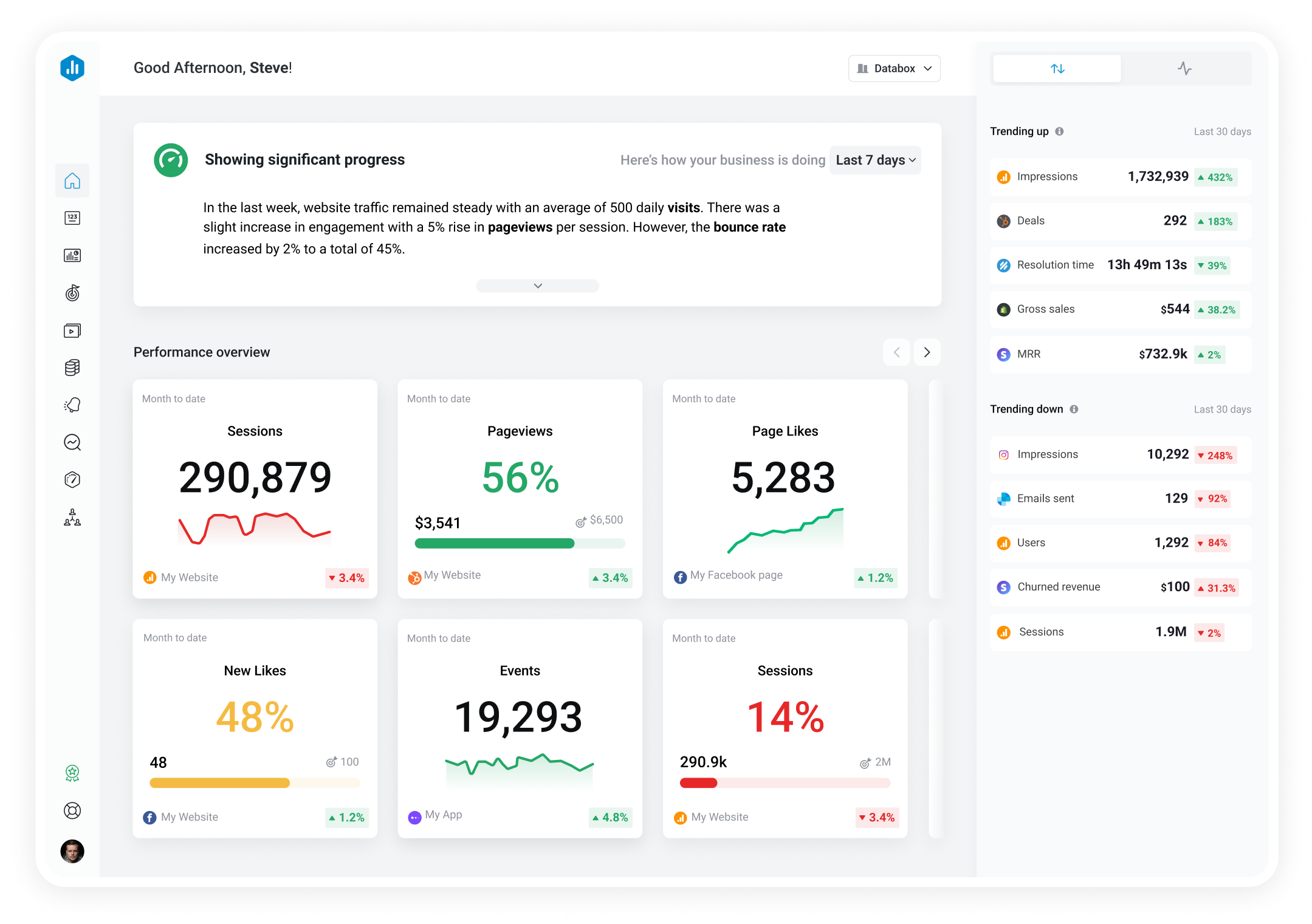Track all of your key business metrics from one screen
GET STARTED
 HubSpot Marketing
Emails Sent
HubSpot Marketing
Emails Sent Emails Sent is a metric in HubSpot that tracks the total number of emails that have been sent from your account to your contacts or lists within a specific time period.
With Databox you can track all your metrics from various data sources in one place.
The emails sent metric simply refers to the number of emails that an individual, organization, or email service provider has sent out to recipients.
This metric covers all types of emails sent, including promotional emails, transactional emails (e.g., order confirmations, password resets), newsletters, and other forms.
There are several major factors that determine whether you’re sending enough emails to your audience – the purpose of the campaign, type of sequence, industry norm, list engagement level, and more.
But ultimately, a good number of emails sent is one where you clearly communicate your message, connect with your target audience, and produce the desired outcomes.
Here’s one benchmark we pulled out from our product that you might find interesting.
According to HubSpot Benchmarks for All HubSpot Customers, companies send more than 2,500 emails a month. The top quartile sends almost 10x more – 20,440 emails a month.
Of course, your numbers can be drastically different. It always comes down to your type of business model and whether (and how much) you focus on email marketing as a channel.
If you want to stay on top of future trends and be able to instantly compare your performance to companies just like yours (in any given industry), you can join our Benchmark Groups – it’s free for everyone!
To improve the performance of your emails sent, there are several areas within your email marketing strategy that need to be on par – segmentation, list quality, personalized sequences, proper triggers, and deliverability.
Now, if you’ve followed some of the standard practices for improving your email performance and want to move the needle even further, we prepared a few strategies that can help you do just that.
We spoke to hundreds of email marketers and asked them to share some of their top strategies.
Here are a few that you can use in your own business instantly:
More resources to help you improve:

Used to show a simple Metric or to draw attention to one key number.

Used to illustrate numerical proportions through the size of the slices.

Used to show comparisons between values.
Databox is a business analytics software that allows you to track and visualize your most important metrics from any data source in one centralized platform.
To track Emails Sent using Databox, follow these steps:
 Goals
Goals Scorecards
Scorecards Metric Digest
Metric Digest Metric Builder
Metric Builder Data Calculations
Data Calculations Performance Screen
Performance ScreenThis dashboard highlights the second part of the inbound funnel- Convert. It shows how well you are creating leads from your site.


Use this HubSpot Marketing report to share insights into important metrics like MQL growth, new contacts, landing page performance, and more.

The main metrics you should keep an eye on after sending an email include the open rate, click-through rate (CTR), conversion rate (if you’ve asked them to take certain action), bounce rate, time spent on email, response rate (if you’ve asked them to reply), and unsubscribes.
But depending on your specific email objective, you might need to prioritize other ones as well.
Analyzing email engagement basically comes down to how granularly you analyze your key metrics.
You need to check out things like:
All of these questions give you valuable insight into your email engagement.
